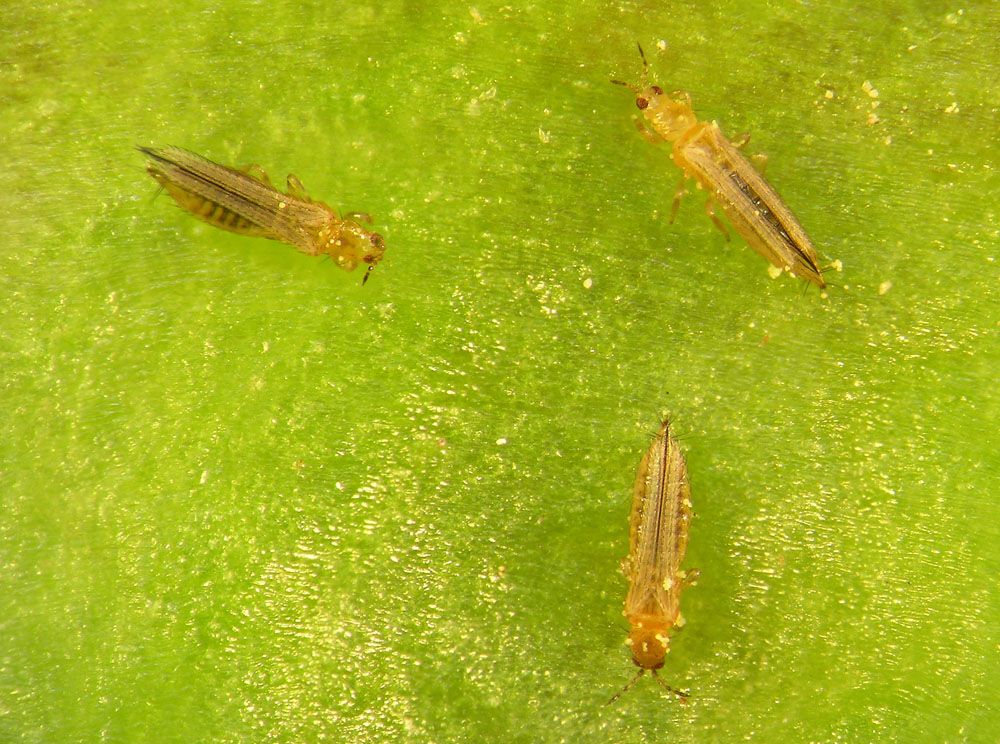
Flower Thrips – Frankliniella tritici
Flower Thrips: Appearance, Territory, Damage and Life Cycle
Latin Name: Frankliniella Tritici
Appearance: The flower thrips (Frankliniella tritici) is one of the most common flower thrips species in the eastern United States. The Entomological Society of America’s approved common name for this species is flower thrips. Frankliniella tritici larvae and pupae are quite similar to other Frankliniella species and are not usually identifiable to species at this stage. Adults have fringed wings that are yellow in hue. Adults are elongate and measure around 1 mm in length.
Hosts Plants: Flower thrips have been found on 29 different plant orders, including berries, cotton, day lilies, field crops, forage crops, grass flowers, legumes, peonies, privet, rose, trees, truck crops, and vines. They appear to like grasses and flowers with yellow or light blooms. In June, roses are particularly vulnerable.
Territory: Frankliniella tritici is indigenous to eastern North America, particularly east of the Rocky Mountains. Flower thrips may be found all across North Carolina, with peak migration occurring during the first week of June. Flower thrips eat by penetrating the surface of the leaf or petal and sucking sap from wounded cells. This damage is limited to the blooms of ornamental plants.
Damage Insect Cause: Plants that have been thrips-infested may become stunted and their leaves may become deformed. Streaks, silvery speckling, and little white spots are all symptoms of thrips damage. This occurs as a result of the thrips sucking plant cells from a variety of garden plants, flowers, fruits, and shade trees. If you have a thrips infection, your plants may be stunted, with damaged blossoms and fruit.
Life History and Habits: Frankliniella tritici is a haplodiploid bacterium that generates diploid females from fertilized eggs and males from unfertilized eggs. Frankliniella tritici has an egg, two larval stages, prepupa, pupa, and adult stages in its life cycle. Larvae and adults of Frankliniella tritici consume plant tissue, however pupal stages are found in the soil and do not eat. From egg to adult, the development time is two to three weeks, with a minimum development temperature of 10°C. Adults can lay up to 17 eggs in plant tissue every day. Larvae and adults are very mobile and can be discovered in the blooms of the host plant or on the fruit. Adults live for around 38 days on average. Frankliniella tritici has several generations every year, and when temperatures rise, populations expand quicker.
